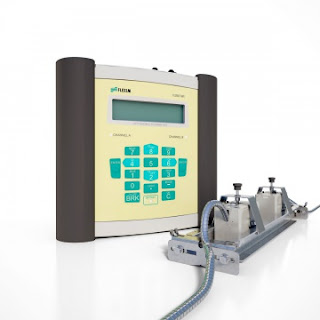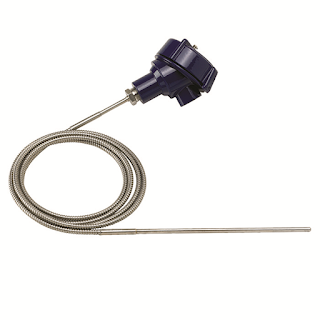 |
| High precision turbine flow meters Courtesy Cameron Measurement Systems |
Operating Principle
(The following is excerpted from Model 700 Series Turbine Flowmeter User Manual, from Cameron Measurement Systems....with some editing)Fluid flows over a diffuser section and is accelerated onto a multi-blade hydro-dynamically balanced turbine rotor. The rotor speed is proportional to the volumetric flow rate. As the rotor turns, a reluctance type pickup coil (mounted on the meter) senses the passage of each blade tip and generates a sine wave output with a frequency that is directly proportional to the flow rate.
The rotor is the only moving part of the turbine flow meter. The small lightweight rotor hubs ensure fast response to process flow changes. The rotor is hydro-dynamically balanced during operation, eliminating the need for mechanical thrust leveling. This low-friction design improves metering linearity and reduces wear and maintenance.
A variable reluctance generating pickup coil contains a permanent magnet and a wire winding. In some cases, the rotor blade of the turbine meter is made of a ferritic stainless steel such as grade 430. The movement of the rotor blade in proximity to the magnetic field of the coil tip produces an AC type voltage pulse within the coil winding. An alternate arrangement finds the ferritic bars embedded in the rotor shroud, where they can interact with the pickup coil. Increasing the quantity of bars on the shroud to outnumber the rotor blades provides more pulses per unit volume (resolution). This feature can be valuable when proving large-capacity meters with a small-volume prover. Shielded wire cable conveys the output of the pickup coil to compatible electronic instruments to indicate flow rate, record, and/or totalize the volumetric flow. The coil itself does not require electrical power to operate.
The meter may be factory-fitted with multiple coils for redundancy, indication of flow direction or pulse train verification. The pickup coil type and magnetic strength vary with application requirements.
The turbine flow meters are calibrated in a horizontal position. Therefore, the best correlation of calibration occurs when the meter is operated in this plane. However, the meter will operate satisfactorily in any position.



